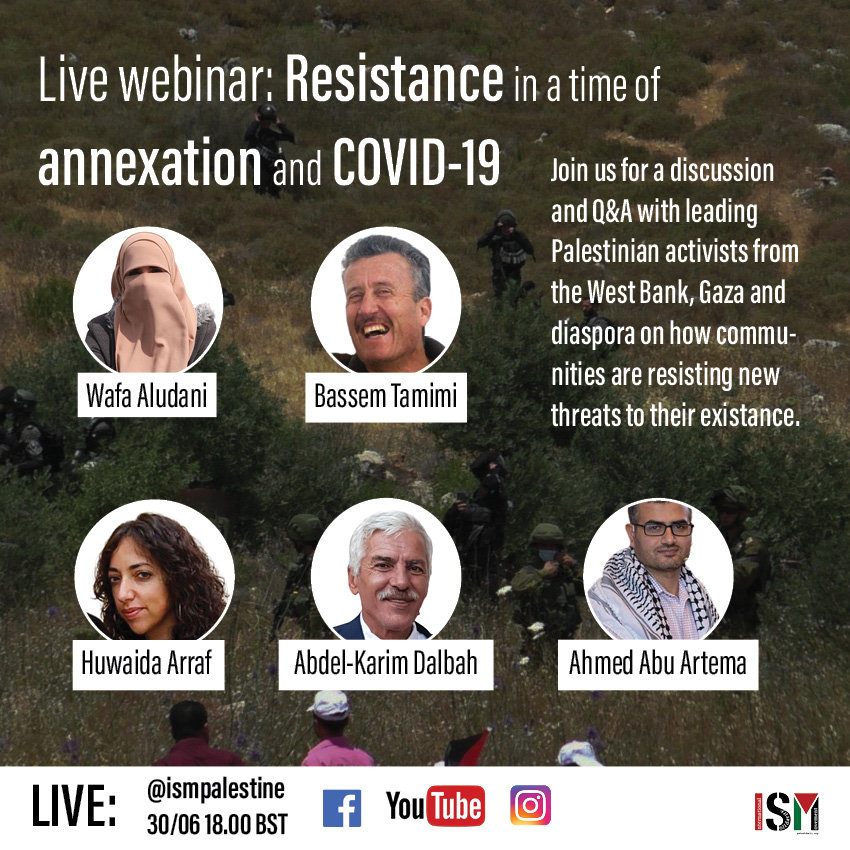Category: In the Media
-
Webinar: International Solidarity & Resisting Colonization
Join ISM Northern California on Saturday, December 19, 2020, for a webinar to learn about the current situation on the ground in Palestine, grassroots resistance, and the work of the International Solidarity Movement.
-
Resistance in a time of annexation and Covid-19 – an ISM webinar
ISM will be hosting a webinar on June 30th, Tuesday 20:00 Ramallah time, on annexation, COVID-19, resistance and international solidarity with the Palestinian struggle for equality and justice.



